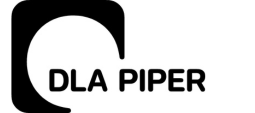Contrary to all expectations, Hungary still does not require the use of building information electronic modelling (BIM) tools in tenders for public works contracts, despite the excitement in the construction industry about the possibility that the tools would be made mandatory as early as 2014.
Back then, the European Parliament proposed an amendment to the then-draft EU Public Procurement Directives (2014/24/EU and 2014/25/EU) requiring contracting authorities in all Member States to use BIM tools in tenders for public works contracts and design contests. Ultimately, however, the EU Public Procurement Directives allowed the Member States to determine for themselves whether to make BIM tools (or other, similar tools) compulsory or voluntary.
The Hungarian legislator has, for the time being, decided against making any firm commitment on this front. A Governmental Decree from 2015 appointed the Lechner Competence Centre – a background institution to the Prime Minister’s Office in the field of architecture and urban planning – to create a Hungarian national standard for BIM, although the Hungarian Act of Standards had already vested all such responsibilities and competences in the Hungarian National Institute for Standardization.
In order to further complicate the picture, in a recent Governmental Decree from July 2019, two competent Ministries were assigned the specific task of exploring the possibility of requiring BIM in certain instances in procurement tenders in Hungary (e.g., where certain project value thresholds are exceeded) and setting the relevant conditions. The deadline for this assignment is the end of 2019.
Accordingly, at the moment, BIM is not unequivocally set out in Hungarian laws and there is no binding obligation on public authorities in Hungary to use it. Of course, contracting authorities still have the option of imposing BIM on tenderers, but this has not happened so far.
The momentum towards complete digitization has been progressing in the EU, and Hungary will not be able to stand apart for long. In the UK, the Netherlands, the Scandinavian countries, and Austria, BIM is already largely mandatory for contracting authorities. BIM projects have also been initiated in the Visegrad countries and many market players – for example in the construction industry – have long been proficient in BIM.
It cannot be denied, however, that clients wishing to use BIM – which has proven to reduce risk by eliminating inefficiencies and redundancies while improving collaboration and communication, ultimately enhancing overall project productivity – face considerable practical challenges. Structural problems such as the standardization of terminology, processes, and interfaces still need to be resolved. Ideally any resolution to such problems should also factor in the progress already achieved in the BIM field, mainly by the Technical Committee 442 of CEN (European Committee for Standardization) which was established to standardize all information in the digitalization of the built environment. Consequently, it will take several years (many believe between three to five), until a structured set of standards, specifications, and reports can be fully developed.
With respect to the legal challenges, BIM tenders have to be designed to remain “contestable” in terms of (public) procurement law and must address a large number of construction law issues in accordance with general contract law. Additionally, various aspects of specific sectorial laws, such as copyright and software law and laws affecting data privacy, data security, and big data, among others, must be carefully considered as a result of BIM’s nature as a highly collaborative process combining efforts and contributions from contractors and designers in high-value projects.
A few examples of the kind of legal issues that will need to be addressed include the need to define the responsibilities and the allocation of risks for design errors vis-á-vis the owner, liability owed to third parties who rely on the accuracy of the model, wider ranges of uses for copyrighted material held in the BIM environment, the handling of intellectual property rights to the significant amounts of information and data created during the modelling, joint authorship rights held by the designers, restrictions on the use of commercially sensitive data, and legal protection from risks such as cyber-attacks, viruses, system failures, or user errors (such as accidental deletions).
Therefore, the pioneer Hungarian individual to face and live up to these challenges will probably not arrive anytime soon.
By Janos Toth, Partner, Wolf Theiss Budapest
This Article was originally published in Issue 6.11 of the CEE Legal Matters Magazine. If you would like to receive a hard copy of the magazine, you can subscribe here.





